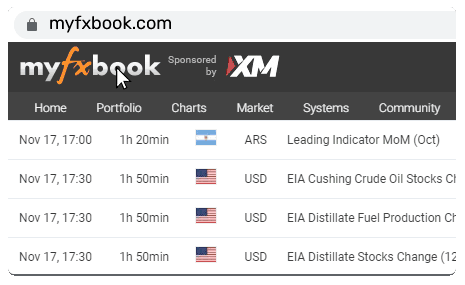How do you develop your personal strategy?
I personally use different strategies.First I test the indicators on the demo chart and test the basics of entry and exit points for different conditions based on various indicators and then I convert them into a single indicator by programming and then I test it in the MetaTrader tester.After thorough reviews I convert my strategy into an Expert Advisor and continue testing again until I am completely satisfied then after final adjustments I run it on the demo account and then the rails.With this method I try to reduce human and emotional error to zero.It has been really fruitful for me.You also write your experiences of the trading process.
That’s a very structured and logical approach — I like how you’ve systematized everything to limit emotional interference. Automating through testing and converting strategies into EAs definitely brings consistency, especially when it’s backed by solid data and real understanding of conditions. I’ve been trading for several years now, and while I’ve experimented with automation too, I’ve found that staying involved manually helps me stay sharp. My focus over time has shifted more toward execution quality, journaling, and psychological stability. Early on, I underestimated how much mindset affects results — now I’d say it’s the core of everything.
Over the years I’ve narrowed things down to a handful of setups I know well, and I track each one closely: not just outcomes, but how well I stuck to my rules. It’s not perfect — still make errors — but the structure and awareness keep me grounded. The real edge, at least for me, has come from consistency, review, and being brutally honest with myself over time. Everyone’s path is a bit different, but hearing how others approach the process always adds perspective. Appreciate you sharing yours.
Indeed, that’s a solid approach, systematizing strategy development through testing and automation really helps remove emotional bias. Staying consistent, reviewing results regularly, and being honest about what works and what doesn’t are crucial steps. Combining thorough backtesting with disciplined execution and strong risk management forms the foundation for long-term success in trading. Psychological stability and ongoing learning often become the real edge over time.
This is the method of a friend of mine:
"I use a hybrid approach. I start with manual backtesting using price action and a few key indicators like RSI and EMA in the MetaTrader 4 platform. When I feel a setup is consistent, I test it on a demo account - the speed and stability of their platform really helps me when setting up entries and exits.
Finally, I automate parts of the strategy using simple EAs, not 100% automated, but more like alerts and semi-automated executions, to speed things up and avoid hesitation.
I totally agree that taking emotion out of the equation can really increase consistency. Thanks for sharing your process, it's inspiring!"
I’ve learned with HFM that tracking risk‑adjusted returns is much more insightful than raw gain alone. In my experience, verifying your system on MyFxBook and refining based on drawdown behavior builds real confidence.
I just try stuff on a demo account and learn from my mistakes and stick to what actually works for me. Just trial, error, and stubbornness.
I’ve taken a more manual route myself. I started by journaling every trade obsessively, entry, exit, why I took it, what I felt, and over time, I started to notice patterns in what worked and what didn’t.
Then eventually built a simple rule-based system using price action and support/resistance levels and tested it on demo for months, tweaked risk parameters, and only after seeing consistent behavior did I go live with small size at first.
ThomasWill posted:I’ve taken a more manual route myself. I started by journaling every trade obsessively, entry, exit, why I took it, what I felt, and over time, I started to notice patterns in what worked and what didn’t.
Then eventually built a simple rule-based system using price action and support/resistance levels and tested it on demo for months, tweaked risk parameters, and only after seeing consistent behavior did I go live with small size at first.
It is the right path, but it is difficult.I used to do the same thing at first, but it is very important to control your emotions in the stages you do with a Rail account and a lot of money.
Have you tried using ChatGPT as part of your trade journaling process? I’ve started using it to help review my trades and spot patterns or mistakes I might overlook. It’s really helpful as a tool, but I don’t rely on it completely, about 10% comes from ChatGPT, and 90% is my own analysis and judgment.
ThomasWill posted:Have you tried using ChatGPT as part of your trade journaling process? I’ve started using it to help review my trades and spot patterns or mistakes I might overlook. It’s really helpful as a tool, but I don’t rely on it completely, about 10% comes from ChatGPT, and 90% is my own analysis and judgment.
Hello dear friend.I use ChatGPT to analyze and review my journal and MetaTrader Strategy Tester results and it is very useful but not complete and definitive.It helps to remember points that I may have neglected.
If you have a specific method, please explain it.
TradeWizards posted:ThomasWill posted:Have you tried using ChatGPT as part of your trade journaling process? I’ve started using it to help review my trades and spot patterns or mistakes I might overlook. It’s really helpful as a tool, but I don’t rely on it completely, about 10% comes from ChatGPT, and 90% is my own analysis and judgment.
Hello dear friend.I use ChatGPT to analyze and review my journal and MetaTrader Strategy Tester results and it is very useful but not complete and definitive.It helps to remember points that I may have neglected.
If you have a specific method, please explain it.
I use ChatGPT mainly for journaling, but it’s turned out to be useful in a few other ways too. One thing I’ve been doing is giving it different market scenarios, and asking what common mistakes traders make in each. It’s helped me think through trades more clearly before I take them. Lately I’ve also used it to organize my personal trading playbook. I fed it my setups, rules, conditions, invalidation criteria, and asked it to lay it out cleanly. Ended up with a structured document that includes pre-trade checklists, journaling prompts, and a daily prep routine. It’s not something I rely on blindly, but it definitely makes the review process more structured.
testing, programming, backtesting, demo, then going live. It’s been key to consistency in my trading journey
Developing a personal strategy requires combining data-driven testing with emotional control. At Valetax, we often recommend traders follow a similar model. Start with idea testing on demo charts, refine entry and exit logic, then validate the system through backtesting and forward testing on MetaTrader. Converting strategies into Expert Advisors is a smart way to maintain consistency and reduce bias. The goal is precision, not perfection, and your approach reflects that perfectly.

















